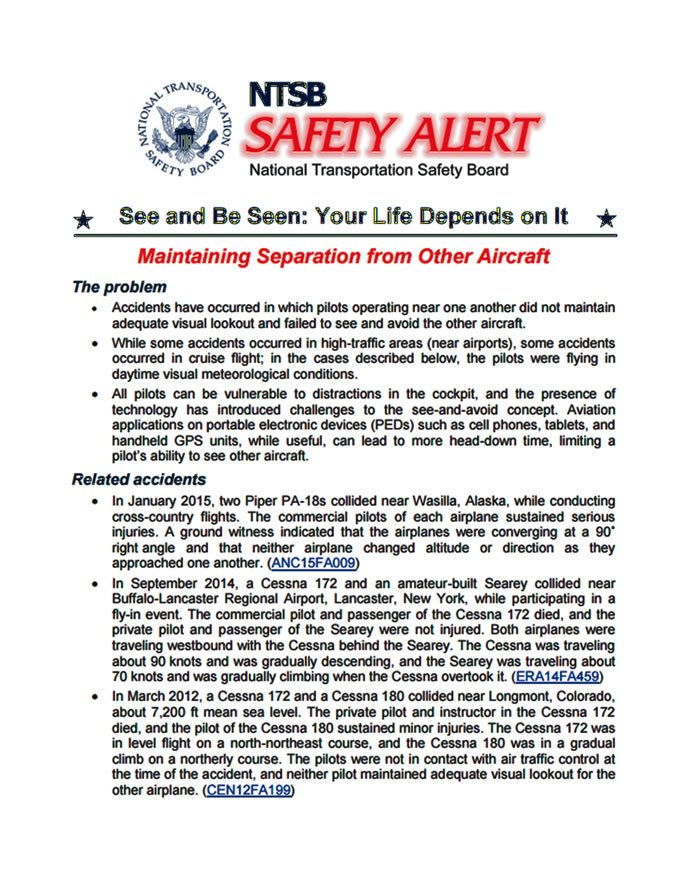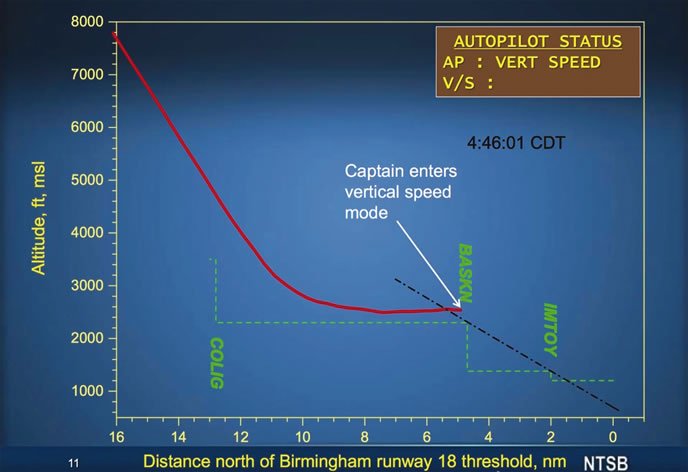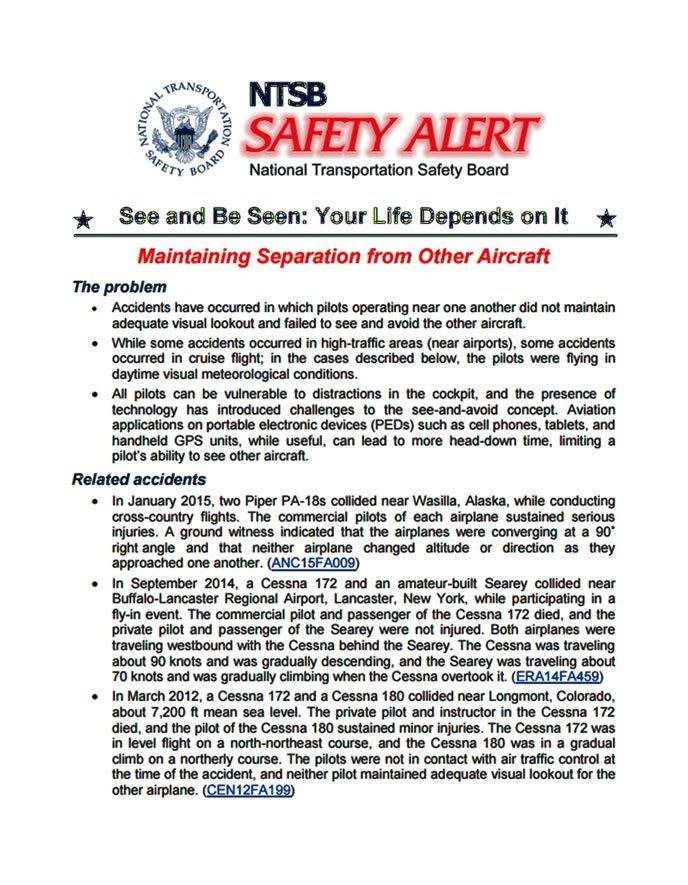From time to time, someone will pop up with the idea that the time-honored practice of visual traffic separation—often known as “see and be seen”—is too archaic for modern aircraft. Anything that flies, so the theory goes, should have some kind of automated collision avoidance system which does exist but will solve all potential conflicts between aircraft of all sizes. Someday, perhaps, but until then most of us are “stuck” using see and be seen.

The NTSB wants you to know, meanwhile, that no one is immune to a mid-air collision, and highlights four mid-airs occurring between 2011 and 2015 in its latest Safety Alert, “See And Be Seen: Your Life Depends On It.” The publication was issued in May and joins several similar Alerts, the most recent of which we highlighted in our June 2015 issue.
Suggestions
Among the NTSB’s recommendations for avoiding a mid-air:
• Methodically scan for traffic throughout your flight, not only in high-volume traffic areas.
• Minimize distractions (including non-essential conversations, photography or sightseeing activities, and PED use).
• Turn on available lighting, including anti-collision lights, and consider using high-intensity discharge (HID) or LED lighting.
• Clearly communicate your intentions and use standard phraseology, known distances and obvious ground references to alert other pilots of your location.
• Recognize that some conditions—terrain, obstacles sun glare—make it mor difficult to see other aircraft.
• Encourage passengers to help look for traffic. During instructional flights, ensure someone is always responsible to scan for traffic.
• On-board traffic advisory systems, when available, are not a substitute for an outside visual scan.

UPS Crash Video
On June 1, 2015, the NTSB released an eight-minute video focused on lessons pilots can learn from its investigation into the August 2013 crash in Birmingham, Ala., of an Airbus A300 operated by United Parcel Service. The video is labeled a “companion” to the official NTSB report, a first for the Board, although it says it plans to produce other videos on future major accidents.
The video highlights the factors comprising the NTSB’s probable cause finding in the accident, including an unstabilized approach, fatigue and poor cockpit resource management. While the video targets commercial pilots, many of the accident’s lessons apply to all of us, no matter what we fly. Both the latest Safety Alert and the video are available on NTSB’s Web site, www.ntsb.gov.




